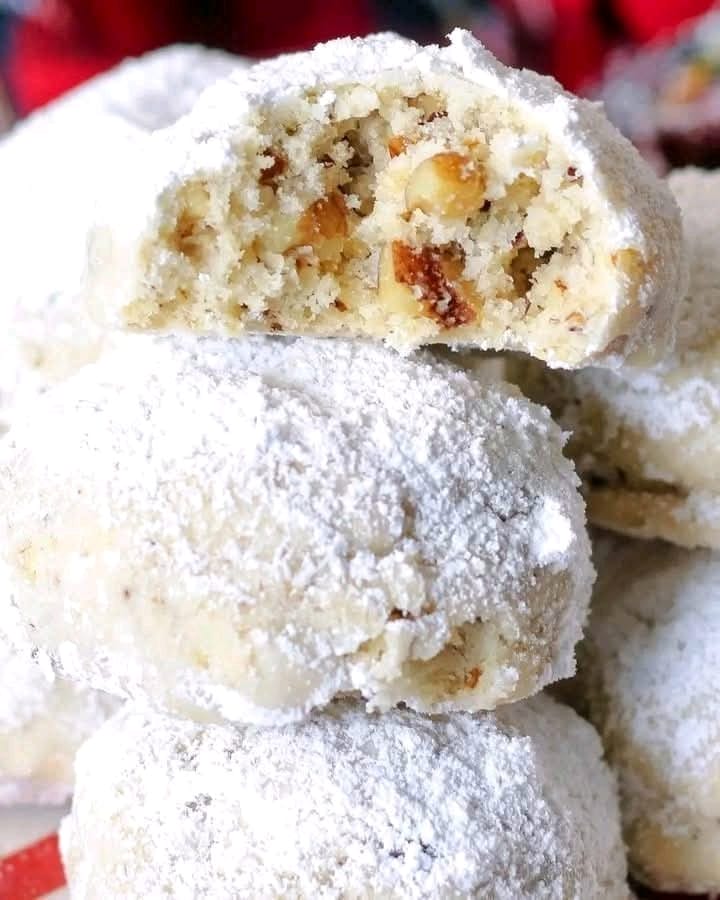Nut Preparation
Chop nuts finely but not too fine. If too coarse, they may interfere with the tender cookie; if too fine, textural contrast is lost. Toasting nuts enhances flavor but must be cooled before mixing.
Even Size Balls
Make cookie dough balls uniform size so they bake evenly. Use a small cookie scoop or measuring spoon.
Baking Time and Oven Temperature
Baking should be at moderate temperature (around 175‑180°C / 350°F). Keep an eye on cookies: they should not brown, just set. Overbaking kills melt‑in‑mouth quality.
Sugar Coating Technique
First roll while warm right out of oven so sugar sticks to warm surface. Then after cooling, roll again to get full coating. Powdered sugar may absorb moisture; double coating helps the look and taste.
Chilling Dough Before Baking (Optional)
Chilling dough for 30 minutes or more can help shape, prevent spreading, improve texture.
Storage and Shelf Life
Store cookies in airtight container at room temperature. Best consumed within 3‑5 days for optimal texture. In humid or warm environments, cool storage helps prevent sugar coating from melting or becoming sticky. Cookies can also be frozen: freeze baked cookies or freeze shaped dough balls, then bake from frozen (possibly adding a minute or two).
Nutritional Information (Estimate for Classic Version)
Per cookie (approximate, for 1‑inch balls)
Calories: ~120‑160 kcal depending on nut type and butter content
Fat: ~7‑10 g (including saturated fat from butter)
Carbohydrates: ~10‑15 g (from flour, sugar)
Protein: ~1‑2 g (nuts contribute some)
Sodium: small amount depending on salt added
Sugar: includes both dough sugar and external powdered sugar
Because of high fat and sugar content, these cookies are rich treats. Moderation is key. For dietary restrictions (low sugar, low fat), adjust ingredients accordingly.
